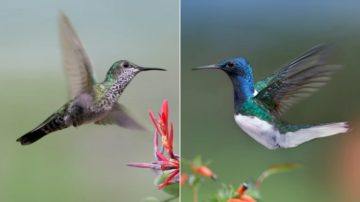Tim Caro in Nature:
 The breathtaking palette of colours seen in nature is the fuel that drives many of us to become biologists, and is the reason why some researchers try to understand the biological basis of animal and plant coloration1. Normally, the drivers of such evolutionary processes can be bracketed into categories that result in colour for protection, signalling or physiological reasons2. Writing in Proceedings of the Royal Society B, Falk et al.3 propose an evolutionary driver with a new twist.
The breathtaking palette of colours seen in nature is the fuel that drives many of us to become biologists, and is the reason why some researchers try to understand the biological basis of animal and plant coloration1. Normally, the drivers of such evolutionary processes can be bracketed into categories that result in colour for protection, signalling or physiological reasons2. Writing in Proceedings of the Royal Society B, Falk et al.3 propose an evolutionary driver with a new twist.
Variation in coloration occurs between species but also within them — leopards (Panthera pardus), for example, can have a black or mottled tawny coat, and the flowers of Iris lutescens can be purple or yellow. These colour differences are variations in form called polymorphisms. For some scientists, it is sufficient to know that such colour polymorphisms exist, but for others, the underlying genetics of such variation must be understood. Formally, a polymorphism is “the occurrence together in the same habitat of two or more distinct forms of a species in such proportions that the rarest of them cannot be maintained by recurrent mutation”4. In other words, for the rare forms to be present, a new mutation doesn’t have to occur each time.
More here.
